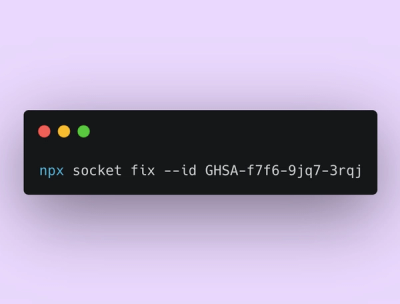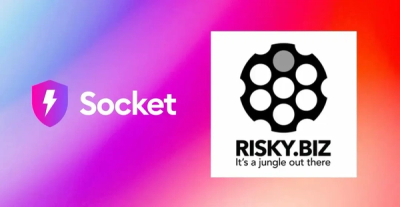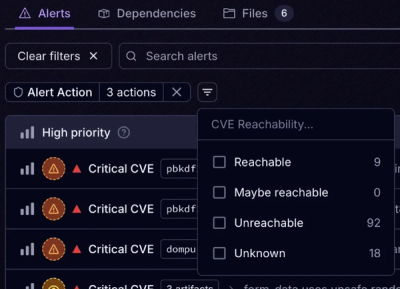
Product
Announcing Socket Fix 2.0
Socket Fix 2.0 brings targeted CVE remediation, smarter upgrade planning, and broader ecosystem support to help developers get to zero alerts.
canvas-sequencer
Advanced tools
Store, serialize, parse, and execute sequences of canvas context instructions.
Store, serialize, parse, and execute series of canvas context instructions!
Normally, if you have a sequence of canvas instructions, you might predefine them in a function which will be distributed in a script file to all your clients.
Suppose, however, that you wish to be able to dynamically define instructions
from the server, and have those instructions executed on the canvas contexts of
your clients. One option would be to wrap the instructions up in a string on the
server, distribute the string, then have the clients call eval() on the
string. This is error-prone and risky however, and exposes you to all the
incumbent problems of the eval() function.
With canvas-sequencer you can package those instructions up in a sequence and
transmit them. Once on the client side, you can unpack the instructions and
execute them on any given context (or even multiple contexts), and all the
issues with the eval() technique fade away.
Server side, or in a Node environment.
const { CanvasSequence, CanvasBlueprint } = require('canvas-sequencer');
The code is also available pre-bundled, via parcel-bundler. You should
probably create your own bundle though, so that you have control over browser
targets, etc.
const { CanvasSequence, CanvasBlueprint } = require('canvas-sequencer/dist');
Client side, to access the bundled code in a script tag:
<script src="path/to/node_modules/canvas-sequencer/dist/index.js"></script>
const seq = new CanvasSequence();
You have access to the standard library of CanvasRenderingContext2D
instructions, with the exception of access to the underlying canvas object,
for safety reasons. You can access these instructions just as you would with a
normal CanvasRenderingContext2D object. Each instruction will be added onto
the end of the sequence.
seq.beginPath();
seq.arc(25,25,42, 0, 2 * Math.PI);
seq.fillStyle = 'green';
seq.fill();
seq.lineWidth = 15;
seq.closePath();
seq.stroke();
The sequencer exposes a toJSON() function, ensuring that with any library
which uses JSON methods to bundle data into packets for transmission (such as
socket.io) you will not need to do anything fancy for transmission of your
sequences. Just send the sequence object as you would any other piece of
serializable data.
emitter.emit('new-sequence', seq);
The transmitted sequence needs to be revived in order for the CanvasSequence functionality to be available. This can be done by passing the transmitted data object to the constructor:
// Assumes that you have recieve the packaged sequence in a 'data' variable.
const seq = new CanvasSequence(data);
You can execute the sequence on any CanvasRenderingContext2D as such:
const ctx1 = document.querySelector('#canvas1').getContext('2d');
seq.execute(ctx1);
// And again on another context!
const ctx2 = document.querySelector('#canvas2').getContext('2d');
seq.execute(ctx2);
Also accessible through this library are sequence 'blueprints'. These allow you to define a sequence once using placeholder tags for values, then build executable sequences using the blueprint and a set of values to take the place of the tags.
The tags you can pass to a blueprint are strings wrapped in curly braces. The string inside the curly braces should be the name of a property on the object with which you intend to build the executable sequence.
Don't worry- if you want to pass the name of such a property into an actual context function, you can still do that. Strings without curly braces are ignored. If you want to pass a string wrapped in curly braces through to a context object, just add an extra set of curly braces.
Here's an example that demonstrates the complete system in action:
const { CanvasBlueprint } = require('canvas-sequencer');
const values = { x: 250, y: 99 };
const bp = new CanvasBlueprint();
const ctx = document.querySelector('#canvas1').getContext('2d');
bp.fillText('y',7,8);
bp.fillText('{{x}}',5,6);
bp.fillRect('{x}','{y}',30,40);
bp.build(values).execute(ctx);
/*
* The result will be the same as if you had done:
*
* ctx.fillText('y',7,8);
* ctx.fillText('{x}',5,6);
* ctx.fillRect(250,99,30,40);
*/
// If you later change the x,y values:
values.x = 101;
values.y = 42;
// You can simply rebuild and execute:
bp.build(values).execute(ctx);
/*
* Now the result will be the same as if you had done:
*
* ctx.fillText('y',7,8);
* ctx.fillText('{x}',5,6);
* ctx.fillRect(101,42,30,40);
*/
You can transmit and unpack a CanvasBlueprint just as you would with the
regular CanvasSequence object:
Transmitting:
emitter.emit('new-blueprint', bp);
Unpacking:
const bp = new CanvasBlueprint(data);
The canvas sequences will be executed one at a time, in the correct sequence, but you cannot retrieve values in a useful manner. Therefore any context method which is intended as a getter has been removed and is currently unavailable. If you have a good idea for how to make it possible to remotely access these return values, let me know!
Also be warned that I have not yet fully tested the API with complex arguments, for example Path objects. I suspect the library will need a bit of fine tuning to make sure this can happen.
parcel-bundler for the bundle. Simpler to use, more
efficient.At some point I will get around to testing the API with complex arguments (e.g.
Path objects).
FAQs
Store, serialize, parse, and execute sequences of canvas context instructions.
The npm package canvas-sequencer receives a total of 792 weekly downloads. As such, canvas-sequencer popularity was classified as not popular.
We found that canvas-sequencer demonstrated a not healthy version release cadence and project activity because the last version was released a year ago. It has 1 open source maintainer collaborating on the project.
Did you know?

Socket for GitHub automatically highlights issues in each pull request and monitors the health of all your open source dependencies. Discover the contents of your packages and block harmful activity before you install or update your dependencies.

Product
Socket Fix 2.0 brings targeted CVE remediation, smarter upgrade planning, and broader ecosystem support to help developers get to zero alerts.

Security News
Socket CEO Feross Aboukhadijeh joins Risky Business Weekly to unpack recent npm phishing attacks, their limited impact, and the risks if attackers get smarter.

Product
Socket’s new Tier 1 Reachability filters out up to 80% of irrelevant CVEs, so security teams can focus on the vulnerabilities that matter.